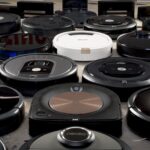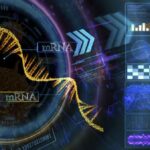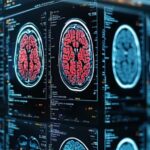Welcome back, guest contributor Tarina Hawkins. This is her eighth posting to the 21st Century Tech Blog. Tarina enjoys researching and writing on a wide range of topics. She takes pride in making complex concepts easy to understand. When not writing, you’ll probably find her enjoying the warm weather and taking long walks.
In her last posting, Tarina wrote about robotic cleaners. In this one, she focuses on the impact that artificial intelligence (AI) and the digitization of work are shaping the skilled trades.
Blue Collar Work In The Age Of Digitization And AI
When the word automation comes up, most workers see the potential for their jobs to disappear. That, however, is far from true with these technologies being more transformational than job-eliminating. Digitization and AI enhance worker safety, improve job skills, and foster collaborative relationships between humans and smart technology.
Forecasts for 2030 for U.S. jobs indicate that up to 30% may be automated. Of those, only 1% of blue-collar jobs are at risk from AI. Skilled trades are becoming more technology-enabled, meaning workers are using these smart tools to boost productivity, rather than seeing jobs disappear.
This is happening in manufacturing, logistics, warehousing, and the construction trades. In this article, we focus on three trades where digitization and AI are changing the nature of blue-collar work. Let’s dig in.
Welders Working With CAD And Robots
Computer-aided design (CAD) software has been around for a while. It is used in engineering, architecture and construction. Welders use it to create 2D and 3D models for the projects they are doing to show where to apply welds and how. They can program robotic welders using CAD. The robots follow the complex instructions the CAD software provides. Welders can then use the robots for jobs that are more difficult to execute.
What makes welding with robots possible is software plugins that can be integrated into programs used in the latest CAD releases. 3D models map the best welding paths and provide instructions for robot welders to execute. The improvements to welds are notable, while the human welders remain safe when dealing with difficult and dangerous jobs.
So, wouldn’t using CAD software with robots put humans out of a job? Not at all. The robots are great at repetitive welding tasks and can be deployed in dangerous work environments where high temperatures or toxic fumes are present. For the human welders, it means getting to do other work and completing projects safely and faster.
The U.S. forecasts a Blue Collar Gold Rush for approximately 330,000 new welders by 2028 to meet demand. New York and California are leading candidates for these blue-collar job openings because they are home to fast-growing cities and aging infrastructure.
Adopting IoT Sensors For Proactive Plumbing
Plumbers and leaks are forever linked, with 10% of homes wasting over 340 litres (90 gallons) of water daily. That’s where IoT sensors help. The sensors use ultrasonic technology to have sound waves measure water speeds as it travels through pipes. The flow rate indicates how much water is being used and if leaks are present.
The Internet-of-Things (IoT) connectivity makes it possible for plumbers to see the data and spot problems, whether on-site or remotely. This gives plumbers the ability to offer home and building owners proactive leak detection services while at the same time helping to reduce water usage.
IoT sensors with AI aboard detect even more subtle changes to water flow and pressure that a plumber can miss. Using machine learning (ML), sensors can spot leak-prone areas by reviewing past data. For plumbers, it means the ability to perform proactive maintenance and target underlying problems.
Drones Helping Landscapers With Planning And Execution
Landscapers use drones for aerial photography and site surveillance. The photographs and calibration technologies used by drones make it easier to measure, design, plan and maintain projects.
New drone models come with real-time kinematic positioning (RTK), a technology that combines GPS with ground-based referencing to build a detailed and accurate model of a site. The images produced are used to create accurate, down to the centimetre, 3D models.
The advent of smart drone technology is giving landscapers a better understanding of the topography, foliage, and drainage of a site, to create designs that work in harmony with the geography.
What’s coming in the future?
- Drones with onboard LiDAR. LiDAR stands for Light Detection and Ranging. It is a remote sensing technology that uses laser light to measure distances from objects to a receiver. With this technology, landscapers can create more accurate site models, even in heavily overgrown locations.
- Drones with GPR. GPR stands for Ground Penetrating Radar. It can be combined with LiDAR to provide subsurface mapping to reveal underground issues that can impact landscape design.
Together, the technology is called LiDAR GPR and is widely used today for archaeology, civil engineering, and infrastructure subsurface mapping.









